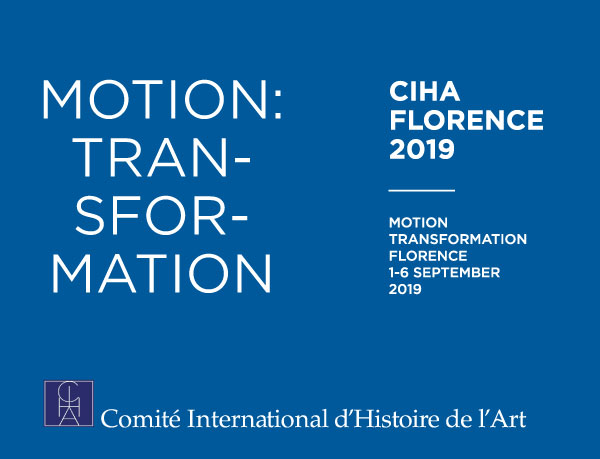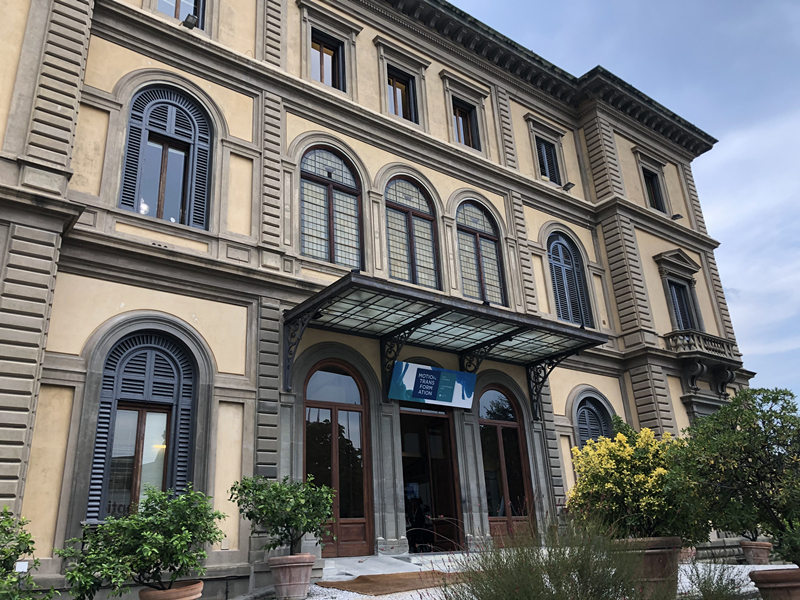
The opening ceremony of the 35th World Conference of Art History was held at the Villa Victoria Convention Center in Florence on September 1, 2019. The congress was co-organized by Italy and Brazil with a general theme of “Motion”. The first half of the congress is held in Florence this year with the theme of “Transformation”. The second half will be held next year in Sao Paulo with the theme of “Migrations”.
At the opening ceremony, on behalf of the CIHA committee, Prof. LaoZhu, president of CIHA, welcomed the participants. Prof. Marzia Faietti, representative of the CIHA Italia Board, interpreted the theme and introduced the preparation work for the congress, which was supplemented by Prof. Gerhard Wolf, director of the Max-Planck-Institut Kunsthistorisches Institut in Florenz. Prof. Claudia Mattos, president of the CIHA Brazilian Committee, introduced the preparations for the Brazilian congress and the cooperation with Italy. On behalf of sponsors, Ms. Donatella Carmi gave a speech.
The Florence congress has nine sessions, including one specific session focusing on connection with the Sao Paulo congress.
President LaoZhu's Speech at the Opening Ceromony
Dear colleagues,
We are very glad that the 35th World Congress of CIHA is about to start, hereby I welcome you all on behalf of CIHA. This Congress is unique because it is jointly hosted by two countries, unprecedented in the history of CIHA since 1873. More noteworthy is that the two countries are far apart by tens of thousands of miles. This evokes an in-between venue where we as art historians stand now. We no longer need to cling to concepts such as the West, the East, or the South. We can tackle a wide range of issues along diverse directions. In today’s world, Art History guides us to reach mutual understanding through a variety of differences. Herein lies the value of Art History.
.jpg)
From left to right: Prof. Gerhard Wolf, Ms. Donatella Carmi, Prof. LaoZhu, Prof. Marzia Faietti, Prof. Claudia Mattos.
Three years ago, in September 2016, the 34th World Congress of CIHA was held in Beijing, focusing on Terms as the theme. We had discussed how ideas about Art and Art History differ in various cultures and across historical periods. Art History shall be plural as "Art Histories". As the Congress was held in Beijing, the distinction between Chinese art and Western art became all the more pronounced. Especially when visiting the Palace Museum in Beijing, we saw works of calligraphy that served as the cornerstone and represent the highest achievement of Chinese art/East Asian Art. We can relate calligraphy to cave painting in the Paleolithic age (e.g. in Lascaux in France). Besides the images of bison and reindeer, cave painting also features dots and lines that portray no image or sign. Such dots and lines are "artistic" by character, though not necessarily convey meanings. Since Picasso’s time, Art no longer hinges on figuration that highlights representation, the language of colors and lines becomes artistic in its own terms, even without conveying meanings. Hence we understand Art can develop along an alternative path. Art History is elusive, hard to pinpoint and concretize (or in other words, we can only approach it from sociological perspective, which is irrelevant to Art per se). Drawing upon presentations at the Congress in Beijing, we have compiled the proceedings in three volumes. I have brought an advance copy of the proceedings for your comments and advices, so that it can be further revised when I am back to China.
I hope the proceedings will contribute to our deeper understanding of the step-by-step progress of the CIHA Congress, and enrich our memory of it. I believe this Congress will also fulfill such a purpose.
Prof. LaoZhu
President of CIHA
Marzia Faietti’s Speech at the Opening Ceremony
After Beijing, now it is the turn of Florence to host the new CIHA World Congress (Comité International d’Histoire de l'Art), precisely the 35th, dedicated to the theme Motion: Transformation (Florence, Villa Vittoria, 1- 6 September 2019). For the first time in the history of the CIHA the congress is divided into two locations: exactly one year after Florence it will move to São Paulo, Brazil, where the general Motion theme will be interpreted in another sense giving rise to Motion: Migrations.
The historical origin of the CIHA is relatively recent: if the first International Congress of Kunstwissenschaft was held in Vienna in 1873, the establishment of the national committees goes back to the second post-war period. However, the rapidity of the evolution of the CIHA is truly amazing, from the expression of a small group of European countries to the promoter of plots and exchanges on a world scale, open to all the countries of the globe.
In this historical dynamic the role of Italy was not secondary; indeed, at times it seemed almost to be at the forefront. For example, the 10th congress took place in Rome in 1912, promoted by Adolfo Venturi and enriched by the presence of foreign scholars including Aby Warburg. The congress focused on international artistic relations and relations between Italy and other nations over the centuries. On the eve of the First World War those themes entered the debate aroused by the emergence of nationalist tendencies. After Rome, it was then the turns of Venice (1955) and Bologna (1979), in a country that was respectively witnessing the reconstruction after the Second World War and a season that, before experiencing the consequences of the oil crisis, still enjoyed the results of the previous economic boom.

Why Florence has been chosen now? Above all because the city, today a destination and landing place for a constant flow of visitors from all over the world, appears as an emblematic case to reflect within a global scenario on the concepts (and objectives) of Internationalism, Transnationalism and Globalism.
The title of the congress in its Florentine part (Motion: Transformation) highlights one of its primary objectives, namely the verification of how the concept of transformation in the history of art and in its teaching and transmission modalities is today subject to a rapid evolution. The verification also intends to investigate if and how the transformation inherent in the research and communication processes of art history is in step with our times or if, conversely, you record a time lag that cancels the incisiveness of our profession and of the same artistic message. The idea of transformation also concerns the congress model, exceptionally distributed in two locations.
Some years ago in Paris, during one of the periodic international board meetings, Claudia Mattos, on behalf of the Brazilian CIHA, and myself, on behalf of the Italian CIHA, proposed a double venue of the congress, Florence and São Paulo. At that time, the historical scenario was profoundly different from today's. Now, in the global age, paradoxically the phenomena of a nationalistic resurgence has strengthened and the broader and more generous ideas (those that open up new scenarios) have a more difficult life. Border closures and customs duties seem to be one of the conflicting polarities with which the new Millennium has opened. On the other hand, problems that have emerged for a long time today have assumed an emergency character. I cannot omit, among these, the ecological disasters that have recently experienced a dramatic acceleration. The Florence 2019 - São Paulo 2020 Congress is born in the background of this changed international scenario and I am sure that it will take it into account, indeed it will treasure it. All together, if we really want it, we can proceed in the search for more adequate cultural models for our times (and by adequate I do not mean the planetary diffusion of incomplete, incorrect or bogus news through the mass media), all together, if we are really ready, we could proceed with the transformation and let us share with each other the emotion that these transformations entail.
(The speech was followed by thanks to all collaborators and sponsors)
Marzia Faietti
President CIHA Italia
